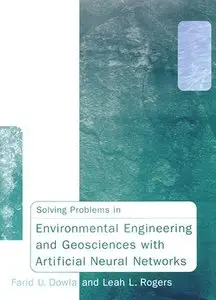Solving Problems in Environmental Engineering and Geosciences with Artificial Neural Networks By Farid U. Dowla, Leah L. Rogers
Publisher: The M.I..T Press 1996 | 310 Pages | ISBN: 0262041480 | CHM | 2 MB
Publisher: The M.I..T Press 1996 | 310 Pages | ISBN: 0262041480 | CHM | 2 MB
Artificial Neural Networks (ANNs) offer an efficient method for finding optimal cleanup strategies for hazardous plumes contaminating groundwater by allowing hydrologists to rapidly search through millions of possible strategies to find the most inexpensive and effective containment of contaminants and aquifer restoration. ANNs also provide a faster method of developing systems that classify seismic events as being earthquakes or underground explosions. Farid Dowla and Leah Rogers have developed a number of ANN applications for researchers and students in hydrology and seismology. This book, complete with exercises and ANN algorithms, illustrates how ANNs can be used in solving problems in environmental engineering and the geosciences, and provides the necessary tools to get started using these elegant and efficient new techniques. Following the development of four primary ANN algorithms (backpropagation, self-organizing, radial basis functions, and hopfield networks), and a discussion of important issues in ANN formulation (generalization properties, computer generation of training sets, causes of slow training, feature extraction and preprocessing, and performance evaluation), readers are guided through a series of straightforward yet complex illustrative problems. These include groundwater remediation management, seismic discrimination between earthquakes and underground explosions, automated monitoring for acoustic and seismic sensor data, estimation of seismic sources, geospatial estimation, lithologic classification from geophysical logging, earthquake forecasting, and climate change. Each chapter contains detailed exercises often drawn from field data that use one or more of the four primary ANN algorithms presented.
Be Happy!!!
!!!No Mirrors below, please! Follow Rules!



